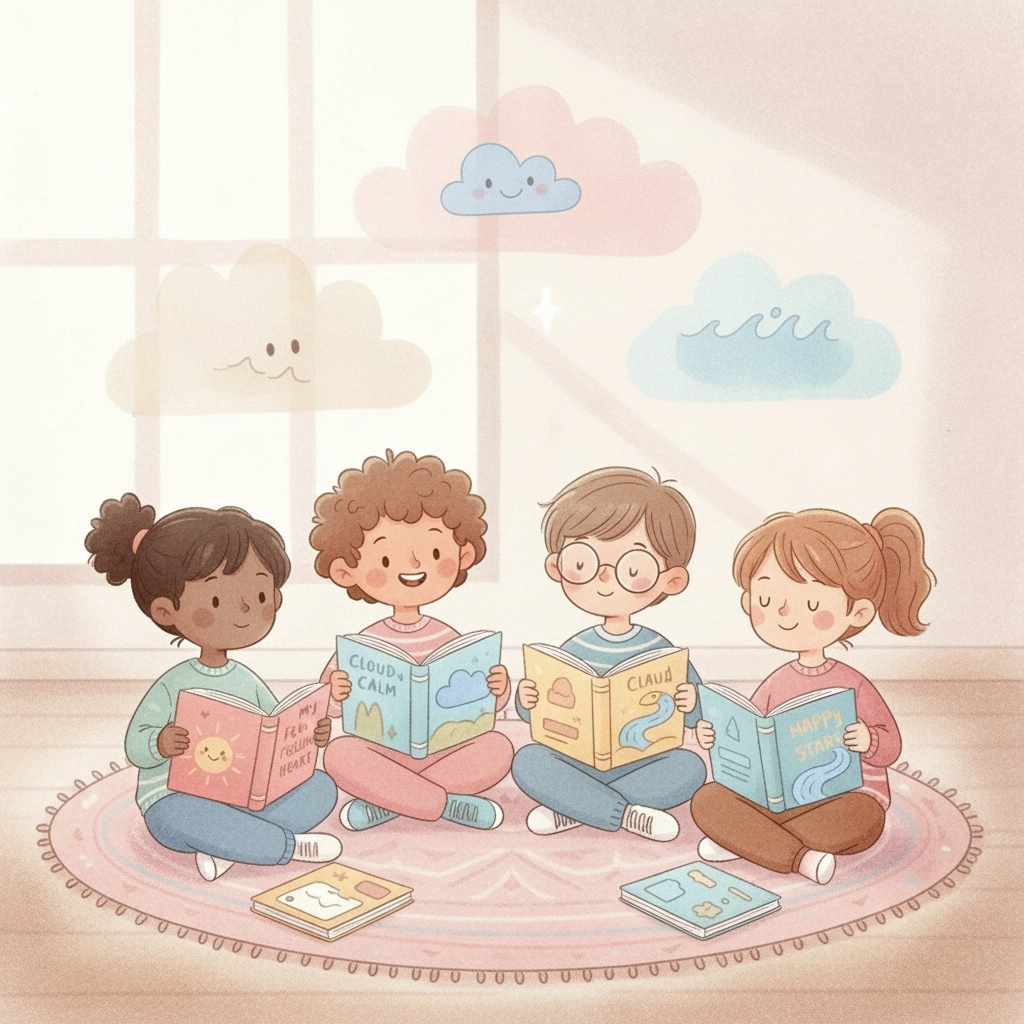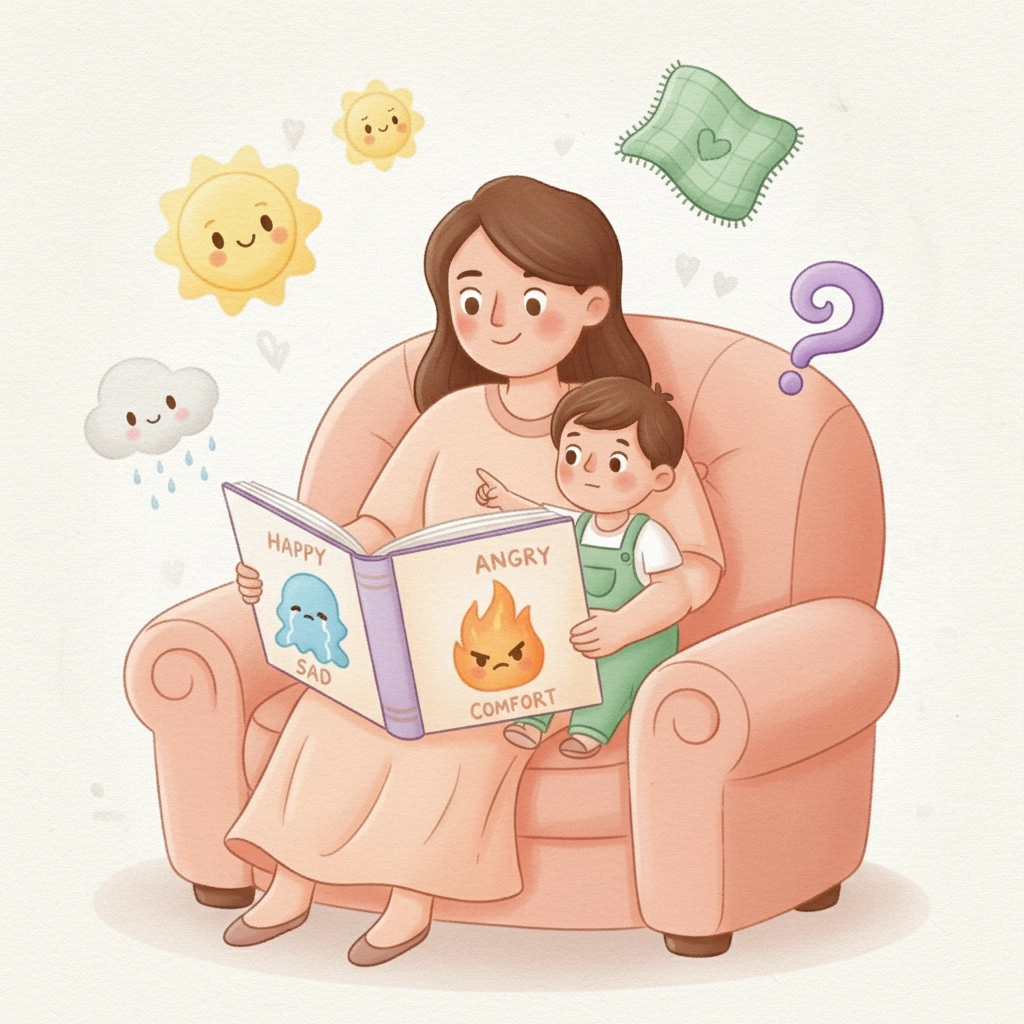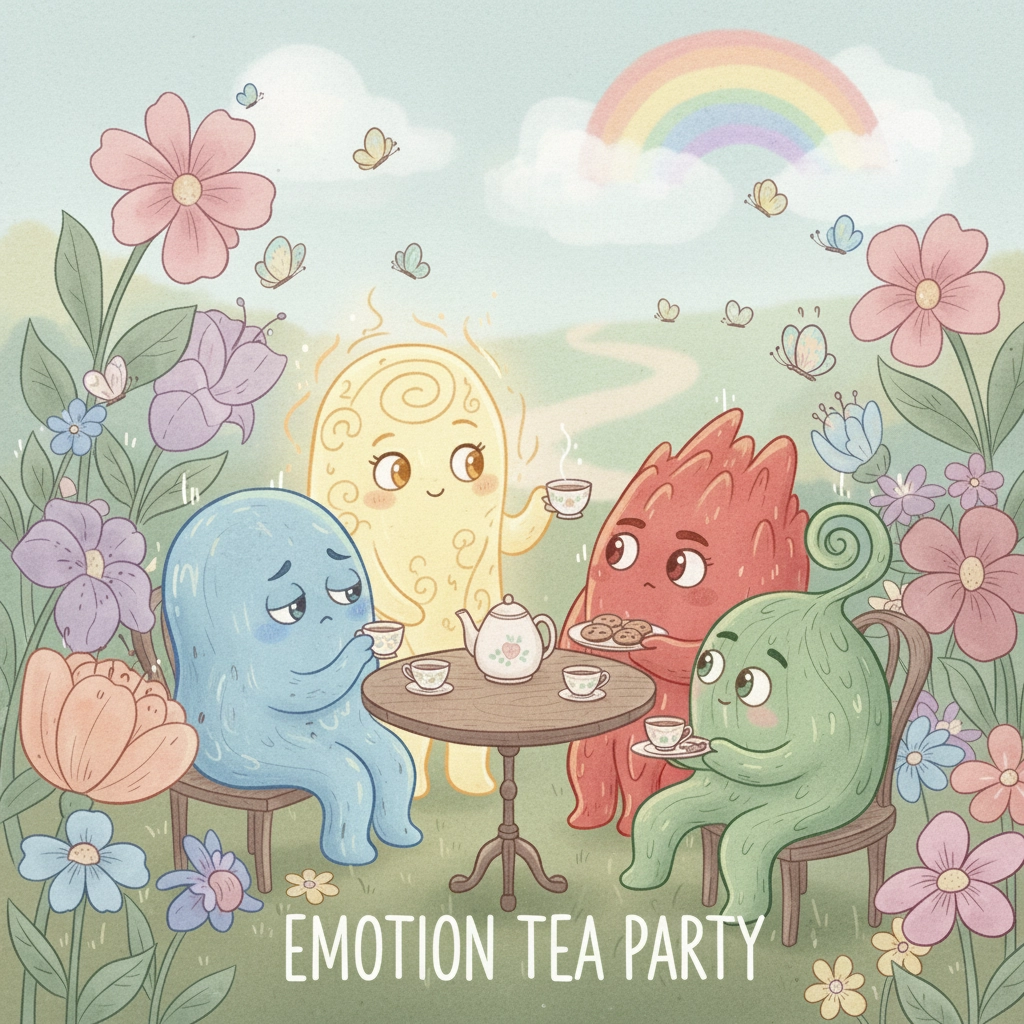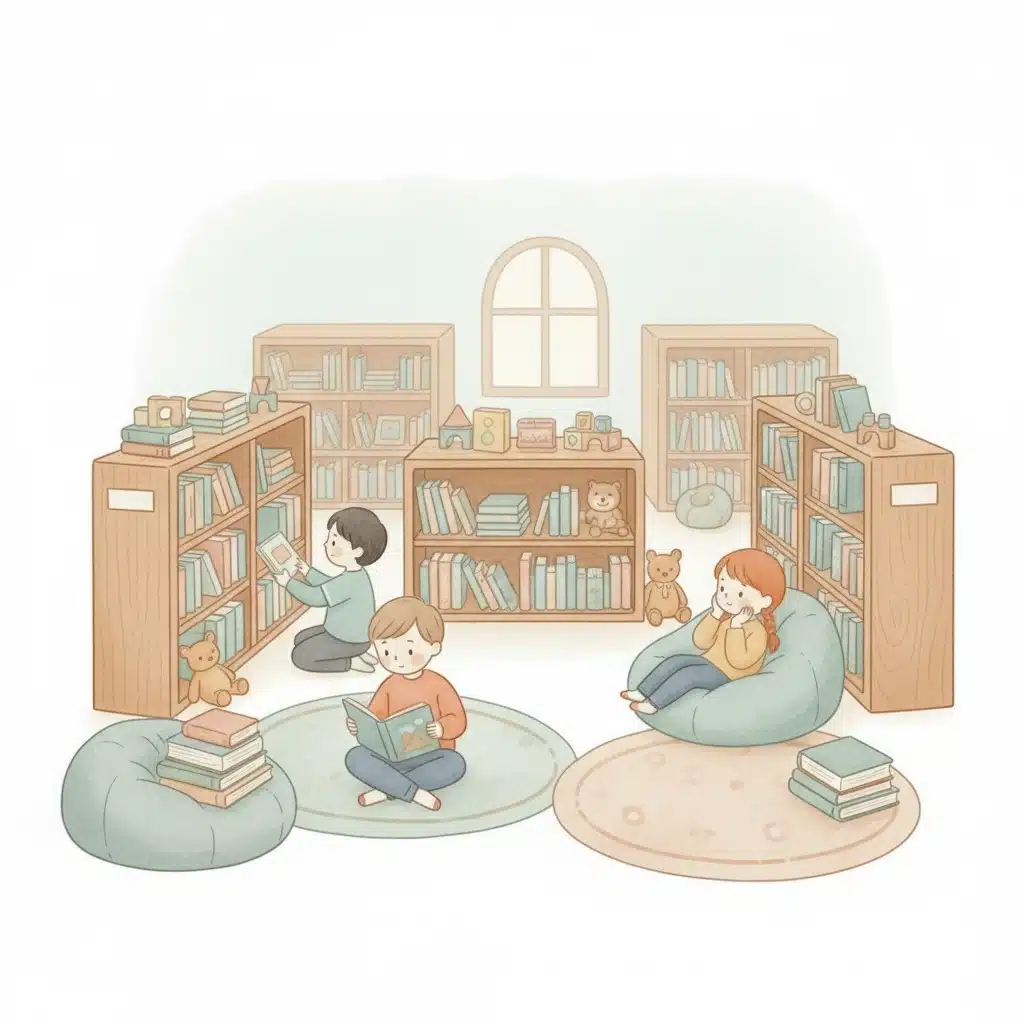Here’s the truth no one tells you about parenting: You can’t protect your child from big feelings, but you can give them the tools to navigate them with confidence.
And honestly? That’s so much better.
Children’s books about emotions aren’t just bedtime stories. They’re emotional training wheels, safe spaces where kids can explore feelings, practice responses, and build the emotional intelligence that research shows is one of the strongest predictors of lifelong success.
But here’s where most parents get stuck: Which books actually work? How do you use them effectively? And what’s the difference between a book that just names feelings versus one that truly builds emotional resilience?
We’re about to answer all of that.
Why Emotional Literacy Is Non-Negotiable for Your Child’s Success
Let’s start with what emotional intelligence actually is (because it’s not just “being nice”).
Emotional intelligence is your child’s ability to:
- Recognize emotions in themselves and others
- Understand what triggers these feelings
- Manage their emotional responses appropriately
- Use emotional information to guide thinking and behavior
Research consistently shows that children with high emotional intelligence demonstrate better self-control, stronger relationships, increased resilience, and yes: even better academic performance. Why? Because a child who can manage frustration when learning gets difficult, who can bounce back from disappointment, and who can work well with others has every advantage.
The beautiful part? Emotional intelligence isn’t fixed: it’s completely teachable. And books are one of your most powerful teaching tools.

The Right Book for the Right Stage: Age-Based Recommendations
Toddlers and Early Readers (Ages 2-5): Building Emotional Vocabulary
At this stage, you’re not trying to solve complex emotional problems: you’re simply helping your child name what they’re feeling. Think of it as building their emotional vocabulary, one feeling word at a time.
Start with these foundational picks:
In My Heart by Jo Witek is a masterpiece of emotional identification. Each page describes how emotions feel physically: when you’re scared, your heart might beat fast, you might feel cold, chills crawling up your neck. This somatic approach helps young children connect internal sensations with feeling words.
The Way I Feel by Janan Cain covers the emotions other books often skip: jealousy, disappointment, silliness. The rhyming format makes it memorable, and the core message is gold: feelings come and go, and they’re all part of who you are.
The Color Monster by Anna Llenas uses colors to represent emotions, making abstract concepts concrete. Your toddler can literally point to “yellow happy” or “red angry”: giving them language before they even have all the words.
Elementary School Children (Ages 5-8): Validation and Coping Strategies
Now we’re moving beyond just naming feelings: we’re teaching that all feelings are valid and introducing basic emotional regulation strategies.
Grumpy Monkey by Suzanne Lang is brilliant for this age because it tackles a common parent trap: immediately trying to cheer up an unhappy child. Jim Panzee is grumpy, everyone tells him he should be happy, and finally he declares: “I’m grumpy, and that’s okay!” This teaches children (and parents) that the goal isn’t constant happiness: it’s emotional honesty.
I Can Handle It! by Laurie Wright addresses bigger feelings that can spiral into anxiety. Instead of dismissing concerns, it offers realistic, sometimes funny problem-solving strategies. The message: you’re capable of handling difficult emotions.
Understanding Myself by Mary C. Lamia works well for more advanced elementary readers, using stories and quizzes to explore the “big four” emotions: happiness, anger, fear, and sadness.

Tweens and Older Children (Ages 9+): Complex Emotional Navigation
Older children face more nuanced emotional challenges: social dynamics, academic pressure, identity formation. They need books that acknowledge this complexity.
My Mixed Emotions serves as an interactive handbook, perfect for tweens who want to understand why they feel certain ways and what they can do about it.
Books at this level should move beyond simple identification toward emotional problem-solving and interpersonal skills.
How to Use Emotional Books Effectively (This Is Where Most Parents Go Wrong)
Here’s what doesn’t work: Reading an emotional book once and expecting it to “fix” your child’s feelings.
Here’s what does work: Using books as conversation starters and emotional rehearsal spaces.
Before Reading: Set the Stage
“We’re going to read about a character who feels really angry. Have you ever felt angry like that? What happened?”
This primes your child to connect personally with the story instead of just passively consuming it.
During Reading: Pause and Process
Don’t rush through. When you hit an emotional moment in the story, pause:
- “How do you think [character] is feeling right now?”
- “What would you do if you felt like this?”
- “Does this remind you of a time when you felt similar?”
After Reading: Make It Real
The magic happens in application. Help your child connect the book’s lessons to real-life scenarios:
- “Remember how [character] took deep breaths when they felt angry? Should we try that next time you’re frustrated?”
- “What did you learn about feeling disappointed that might help you?”

Building Your Emotional Literacy Library: The Essential Collection
You don’t need 50 books: you need the right books that you’ll read repeatedly and reference often.
The Foundation (Ages 2-6):
- Feelings identification: The Feelings Book by Todd Parr, My Many Colored Days by Dr. Seuss
- Emotional validation: Grumpy Monkey by Suzanne Lang
- Physical awareness: In My Heart by Jo Witek
The Expansion (Ages 5-9):
- Specific challenges: The Invisible String by Patrice Karst (separation anxiety), When Sophie Gets Angry by Molly Bang (anger management)
- Social emotions: Books addressing jealousy, disappointment, embarrassment
- Coping strategies: I Can Handle It! by Laurie Wright
The Advanced Collection (Ages 8+):
- Interactive guides: My Mixed Emotions, Understanding Myself by Mary C. Lamia
- Complex scenarios: Books dealing with friendship conflicts, academic pressure, family changes
The Books That Actually Change Behavior (Not Just Awareness)
Some books just name feelings. Others actually teach emotional regulation. Here’s how to tell the difference:
Look for books that include:
- Physical coping strategies (deep breathing, counting, movement)
- Problem-solving frameworks (what can I control vs. what can’t I control?)
- Social skills (how to express needs, how to handle conflicts)
- Recovery strategies (how to bounce back from disappointment, how to repair relationships)
The Feelings Book by Todd Parr doesn’t just say “sometimes you feel angry”: it shows what anger looks like and suggests what you can do when you feel that way.
Glad Monster, Sad Monster by Ed Emberly includes masks so children can literally “try on” different emotions, making the experience interactive and memorable.

What About Books for Parents?
You can’t effectively coach emotional intelligence if you’re still figuring out your own emotional responses.
The Everything Parent’s Guide to Emotional Intelligence in Children provides the theoretical framework, though parents note it could use more practical examples. The key insight: you model what you want to teach.
When you validate your child’s feelings instead of immediately trying to “fix” them, when you demonstrate healthy coping strategies during your own frustrated moments, when you talk openly about emotions: that’s when the books become truly powerful.
The Reality Check: What Books Can and Can’t Do
Books are incredible tools, but they’re not magic wands. They can’t:
- Eliminate big feelings (and you wouldn’t want them to)
- Replace the need for emotional coaching from you
- Fix deeper emotional or behavioral issues that might need professional support
What they can do:
- Give children language for their internal experiences
- Normalize the full range of emotions
- Provide practice scenarios for emotional situations
- Create opportunities for meaningful conversations
- Build emotional vocabulary and awareness
Your Next Step: Start Simple, Stay Consistent
Don’t overthink this. Pick one book from the age-appropriate recommendations above. Read it with your child. Ask questions. Make connections to real life. Repeat.
The goal isn’t to create a perfectly emotionally regulated child (impossible and unnecessary). The goal is to raise a child who understands their emotions, accepts them as valid information, and has strategies for responding thoughtfully instead of reactively.
At Garden Wolf Publishing, we’ve seen firsthand how the right children’s books can transform not just individual families, but entire classroom and therapeutic environments. Our SEL books are specifically designed to bridge the gap between emotional awareness and practical application: because awareness without tools isn’t enough.
Ready to explore books that actually build emotional resilience? Check out our curated collection of SEL picture books or download our free SEL poster to get started with emotional literacy in your home today.
Your child’s emotional intelligence journey starts with a single book: and a parent willing to have real conversations about feelings. You’ve got this.

